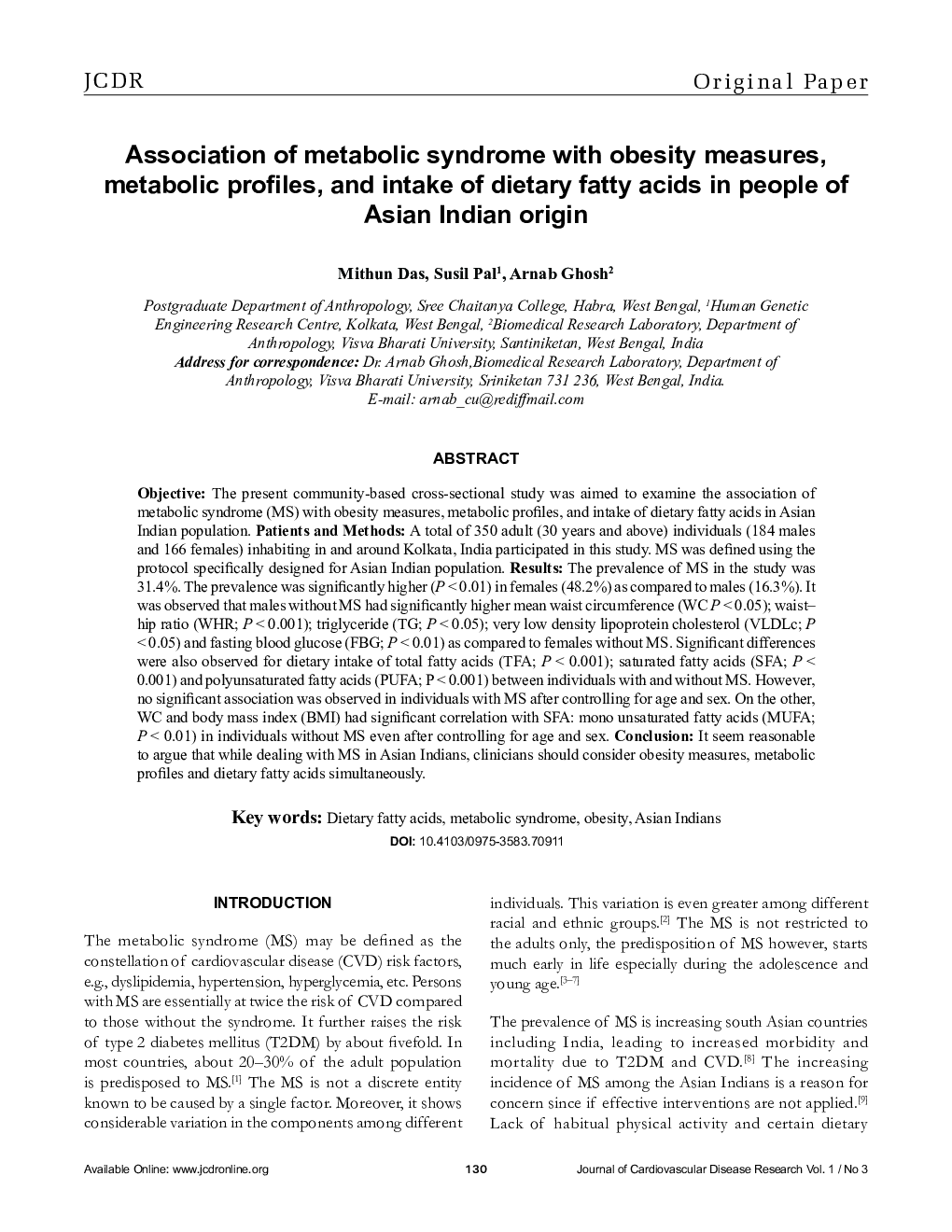| Article ID | Journal | Published Year | Pages | File Type |
|---|---|---|---|---|
| 2965665 | Journal of Cardiovascular Disease Research | 2010 | 6 Pages |
Abstract
Objective: The present community-based cross-sectional study was aimed to examine the association of metabolic syndrome (MS) with obesity measures, metabolic profiles, and intake of dietary fatty acids in Asian Indian population. Patients and Methods: A total of 350 adult (30 years and above) individuals (184 males and 166 females) inhabiting in and around Kolkata, India participated in this study. MS was defined using the protocol specifically designed for Asian Indian population. Results: The prevalence of MS in the study was 31.4%. The prevalence was significantly higher (P < 0.01) in females (48.2%) as compared to males (16.3%). It was observed that males without MS had significantly higher mean waist circumference (WC P < 0.05); waist- hip ratio (WHR; P < 0.001); triglyceride (TG; P < 0.05); very low density lipoprotein cholesterol (VLDLc; P < 0.05) and fasting blood glucose (FBG; P < 0.01) as compared to females without MS. Significant differences were also observed for dietary intake of total fatty acids (TFA; P < 0.001); saturated fatty acids (SFA; P < 0.001) and polyunsaturated fatty acids (PUFA; P < 0.001) between individuals with and without MS. However, no significant association was observed in individuals with MS after controlling for age and sex. On the other, WC and body mass index (BMI) had significant correlation with SFA: mono unsaturated fatty acids (MUFA; P < 0.01) in individuals without MS even after controlling for age and sex. Conclusion: It seem reasonable to argue that while dealing with MS in Asian Indians, clinicians should consider obesity measures, metabolic profiles and dietary fatty acids simultaneously.
Related Topics
Health Sciences
Medicine and Dentistry
Cardiology and Cardiovascular Medicine
Authors
Mithun Das, Susil Pal, Arnab Ghosh,
